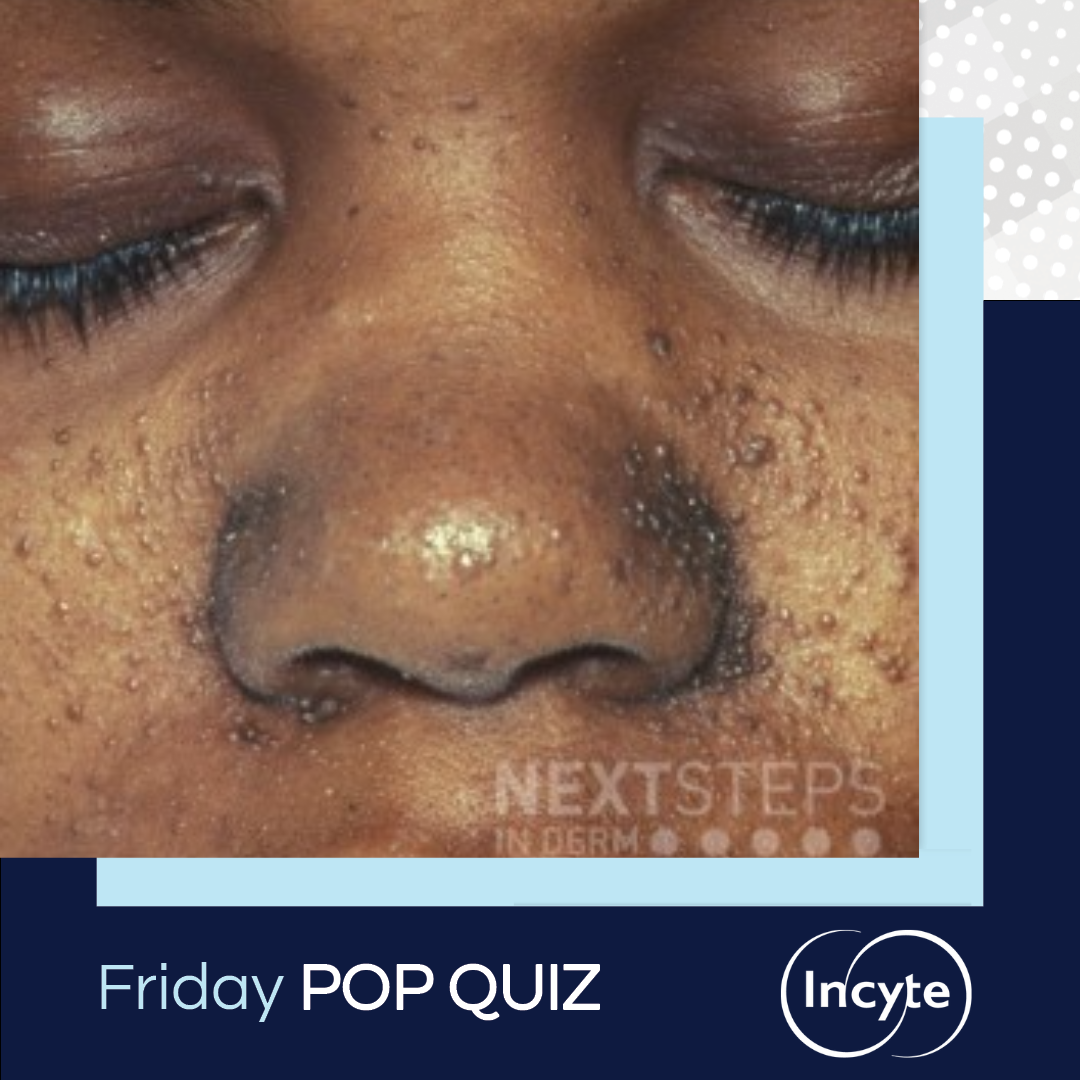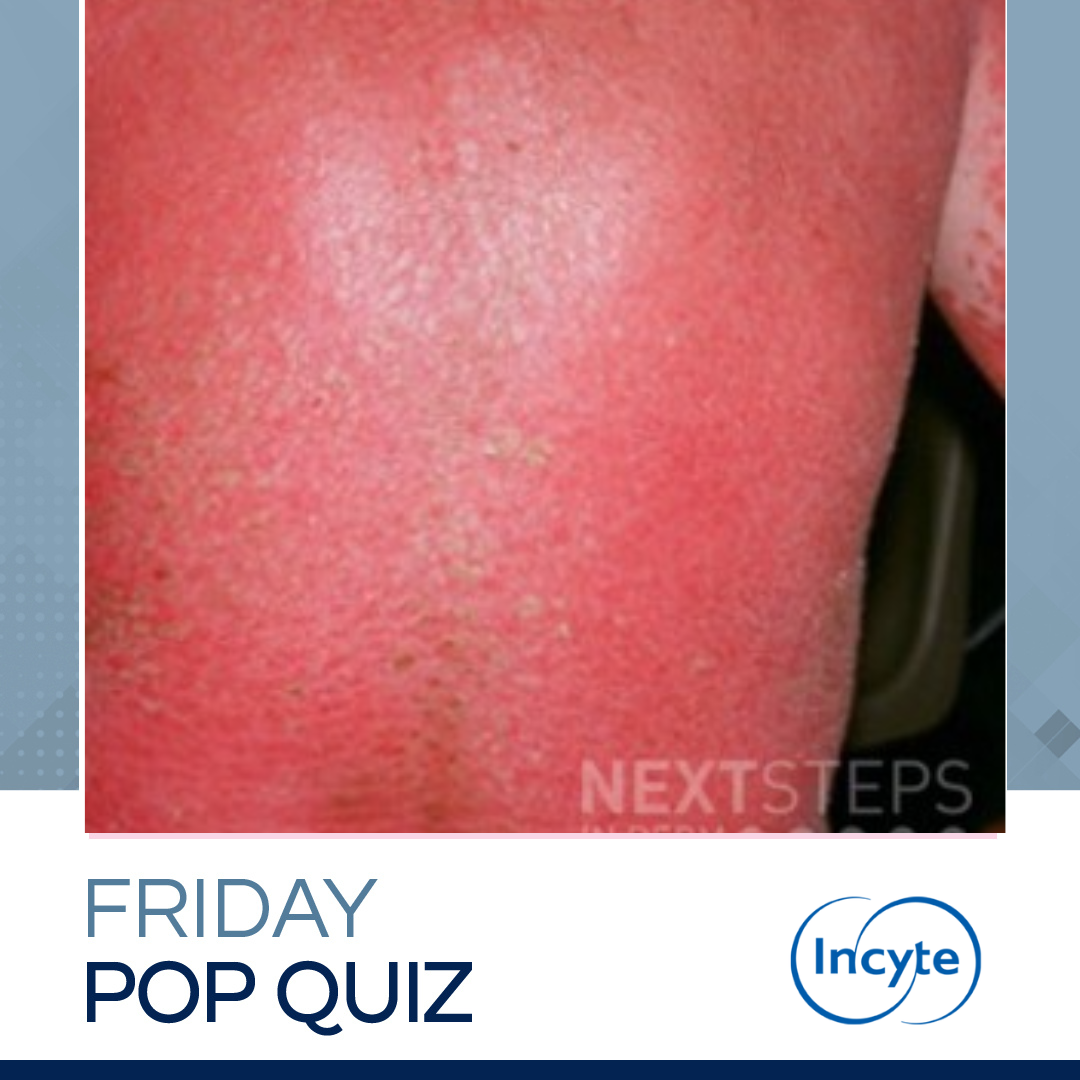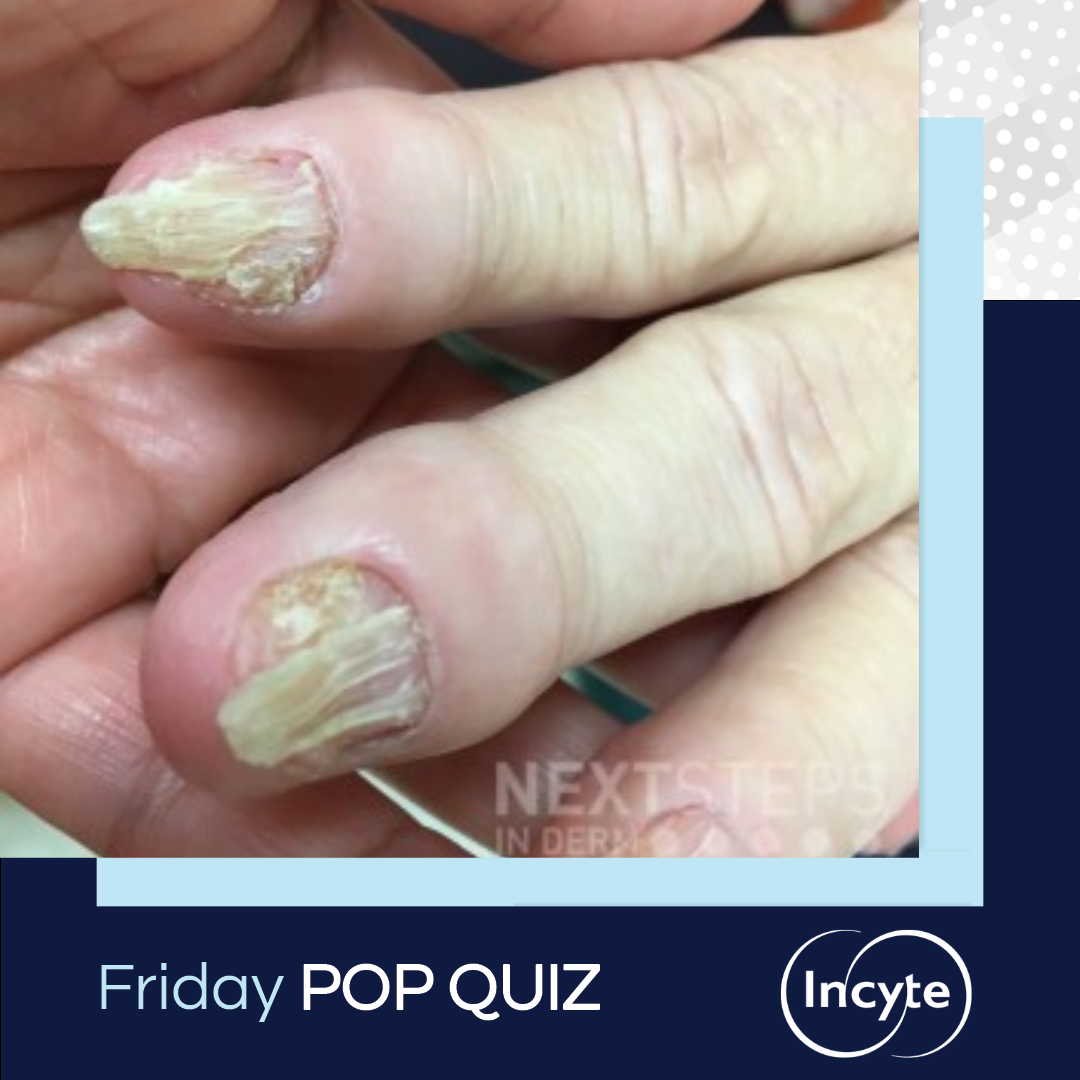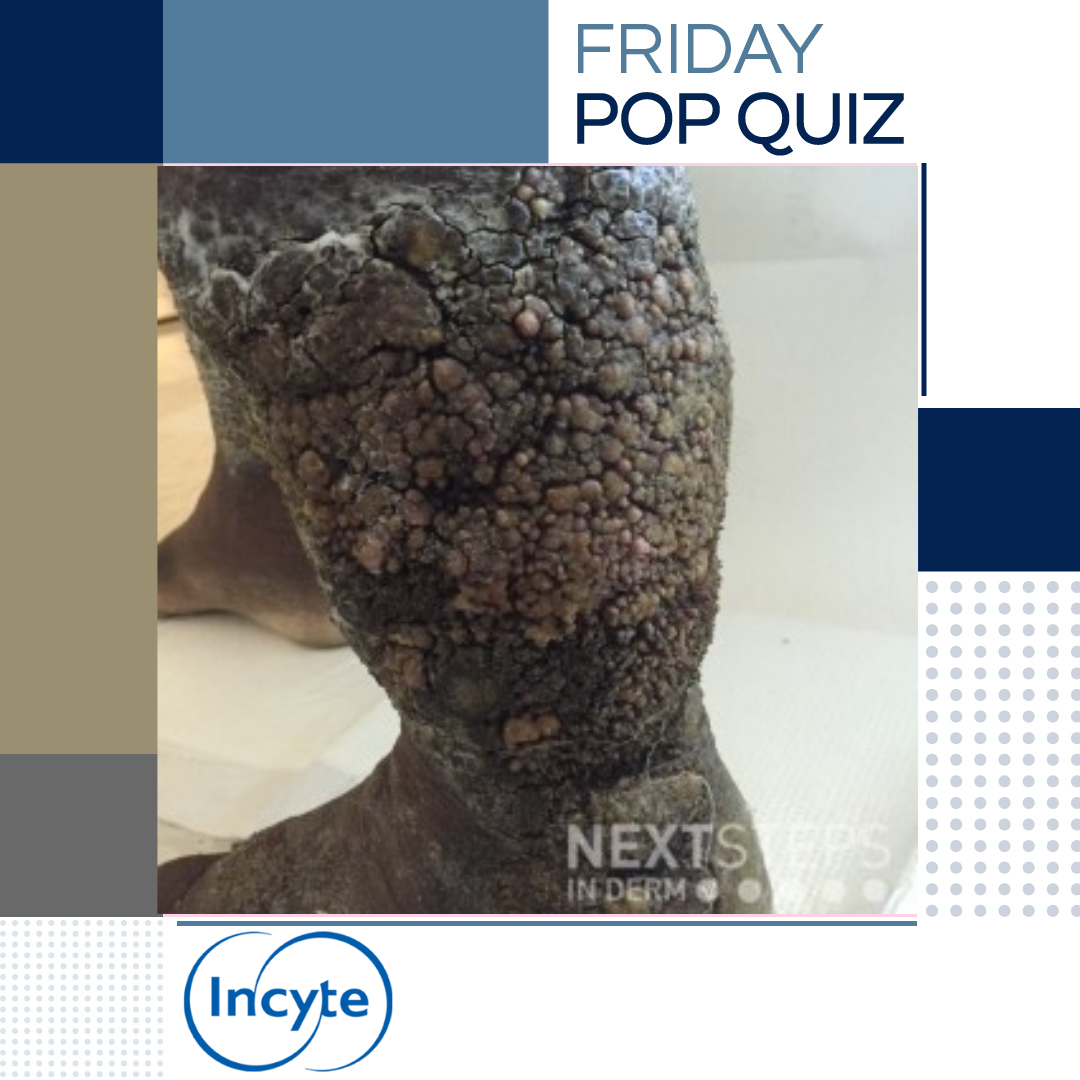Hypertension – Friday Pop Quiz 9/29/2023
 A 44-year-old man with a history of diabetes, hypertension, and major depressive disorder presents to the office with the eruption shown for several months. The lesions are also all across the patient's back and have not resolved with twice-daily clobetasol 0.05% ointment application for 2 months. Which of the following is the most appropriate treatment?
A. Intralesional triamcinolone
B. Nar …
A 44-year-old man with a history of diabetes, hypertension, and major depressive disorder presents to the office with the eruption shown for several months. The lesions are also all across the patient's back and have not resolved with twice-daily clobetasol 0.05% ointment application for 2 months. Which of the following is the most appropriate treatment?
A. Intralesional triamcinolone
B. Nar …
 A 44-year-old man with a history of diabetes, hypertension, and major depressive disorder presents to the office with the eruption shown for several months. The lesions are also all across the patient's back and have not resolved with twice-daily clobetasol 0.05% ointment application for 2 months. Which of the following is the most appropriate treatment?
A. Intralesional triamcinolone
B. Nar …
A 44-year-old man with a history of diabetes, hypertension, and major depressive disorder presents to the office with the eruption shown for several months. The lesions are also all across the patient's back and have not resolved with twice-daily clobetasol 0.05% ointment application for 2 months. Which of the following is the most appropriate treatment?
A. Intralesional triamcinolone
B. Nar … 

 An elderly man presents with generalized erythroderma, as shown. Upon standing, only the patient’s abdominal creases are spared from erythroderma. The patient has peripheral eosinophilia. Which of the following is the most likely diagnosis?
A. Drug reaction with eosinophils and systemic symptoms (DRESS)
B. Mastocytosis
C. Papuloerythroderma of Ofuji
D. Pityriasis rubra pilaris
…
An elderly man presents with generalized erythroderma, as shown. Upon standing, only the patient’s abdominal creases are spared from erythroderma. The patient has peripheral eosinophilia. Which of the following is the most likely diagnosis?
A. Drug reaction with eosinophils and systemic symptoms (DRESS)
B. Mastocytosis
C. Papuloerythroderma of Ofuji
D. Pityriasis rubra pilaris
…  A 68-year-old man presents to the office for pruritic lesions on his trunk. He recently was initiated on a medication for metastatic melanoma. Which of the following is the most appropriate medication for the management of this patient?
A. Dupilumab
B. Etanercept
C. Oral terbinafine
D. Topical corticosteroid
E. Topical ketoconazole
To find out the correct answer and read the ex …
A 68-year-old man presents to the office for pruritic lesions on his trunk. He recently was initiated on a medication for metastatic melanoma. Which of the following is the most appropriate medication for the management of this patient?
A. Dupilumab
B. Etanercept
C. Oral terbinafine
D. Topical corticosteroid
E. Topical ketoconazole
To find out the correct answer and read the ex …  A 40-year-old female began to develop tumors in childhood and continued to form them in adulthood. The tumors arose from the proximal or lateral nail fold and occurred most commonly around the toenails. She developed subungual tumors that originated under the nail plate and longitudinal red streaks with proximal narrowing in the fingernails. Over time, the lesions led to longitudinal grooving …
A 40-year-old female began to develop tumors in childhood and continued to form them in adulthood. The tumors arose from the proximal or lateral nail fold and occurred most commonly around the toenails. She developed subungual tumors that originated under the nail plate and longitudinal red streaks with proximal narrowing in the fingernails. Over time, the lesions led to longitudinal grooving …  A patient presents with chronic swelling of the lower extremities and circumferential lesions on both lower legs of several years duration. The patient's legs are now as shown in the image. Which of the following is the most likely diagnosis?
A. Lipodermatosclerosis
B. Elephantiasis nostras verrucosa
C. Deep fungal infection
D. Podoconiosis
E. Pigmented purpuric dermatosis
To f …
A patient presents with chronic swelling of the lower extremities and circumferential lesions on both lower legs of several years duration. The patient's legs are now as shown in the image. Which of the following is the most likely diagnosis?
A. Lipodermatosclerosis
B. Elephantiasis nostras verrucosa
C. Deep fungal infection
D. Podoconiosis
E. Pigmented purpuric dermatosis
To f …